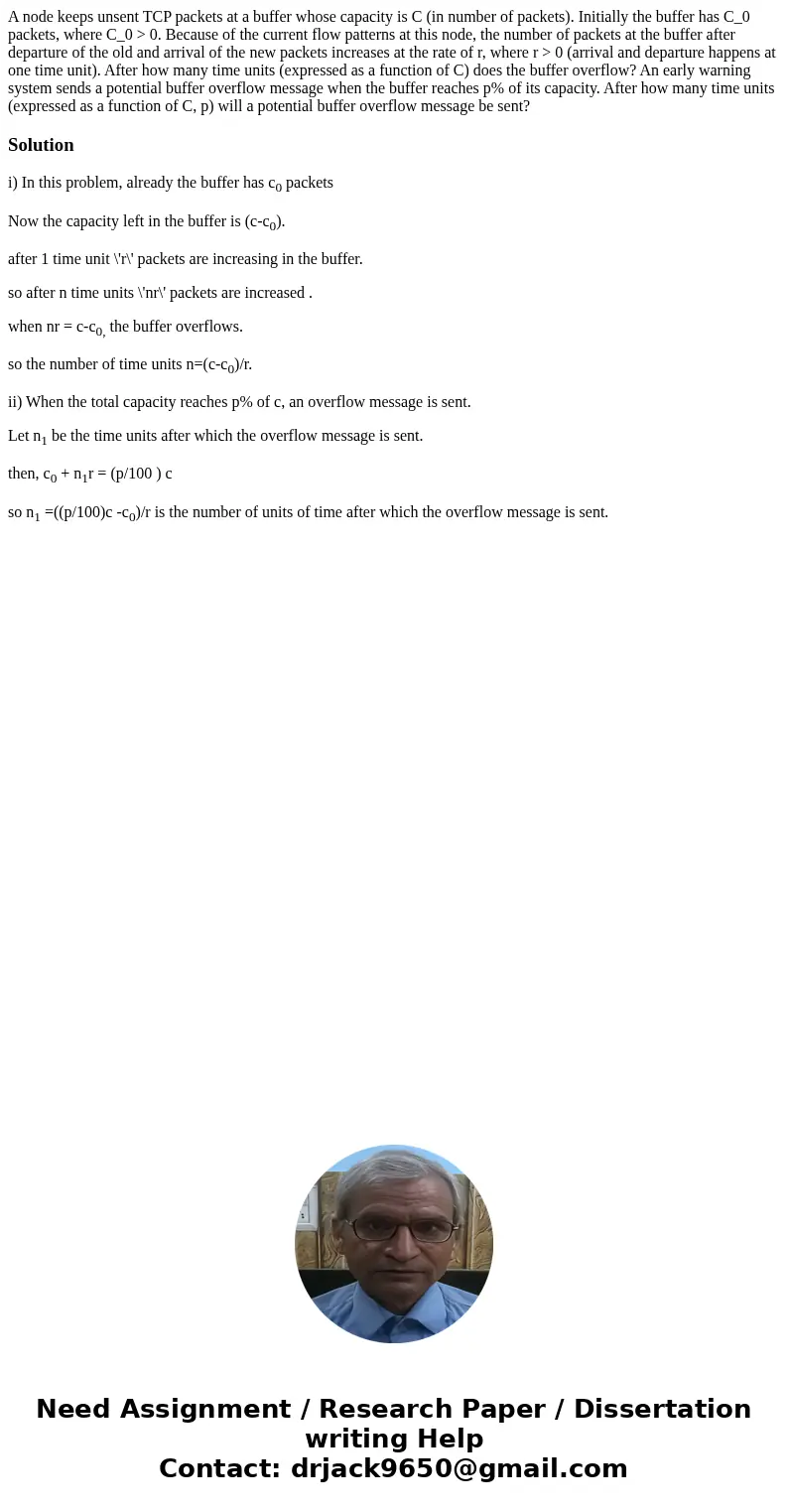A node keeps unsent TCP packets at a buffer whose capacity i
A node keeps unsent TCP packets at a buffer whose capacity is C (in number of packets). Initially the buffer has C_0 packets, where C_0 > 0. Because of the current flow patterns at this node, the number of packets at the buffer after departure of the old and arrival of the new packets increases at the rate of r, where r > 0 (arrival and departure happens at one time unit). After how many time units (expressed as a function of C) does the buffer overflow? An early warning system sends a potential buffer overflow message when the buffer reaches p% of its capacity. After how many time units (expressed as a function of C, p) will a potential buffer overflow message be sent?
Solution
i) In this problem, already the buffer has c0 packets
Now the capacity left in the buffer is (c-c0).
after 1 time unit \'r\' packets are increasing in the buffer.
so after n time units \'nr\' packets are increased .
when nr = c-c0, the buffer overflows.
so the number of time units n=(c-c0)/r.
ii) When the total capacity reaches p% of c, an overflow message is sent.
Let n1 be the time units after which the overflow message is sent.
then, c0 + n1r = (p/100 ) c
so n1 =((p/100)c -c0)/r is the number of units of time after which the overflow message is sent.

 Homework Sourse
Homework Sourse